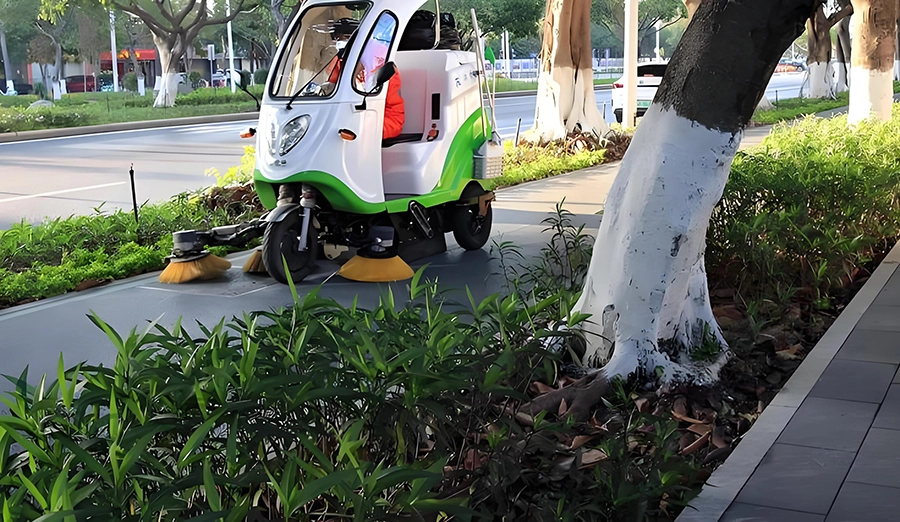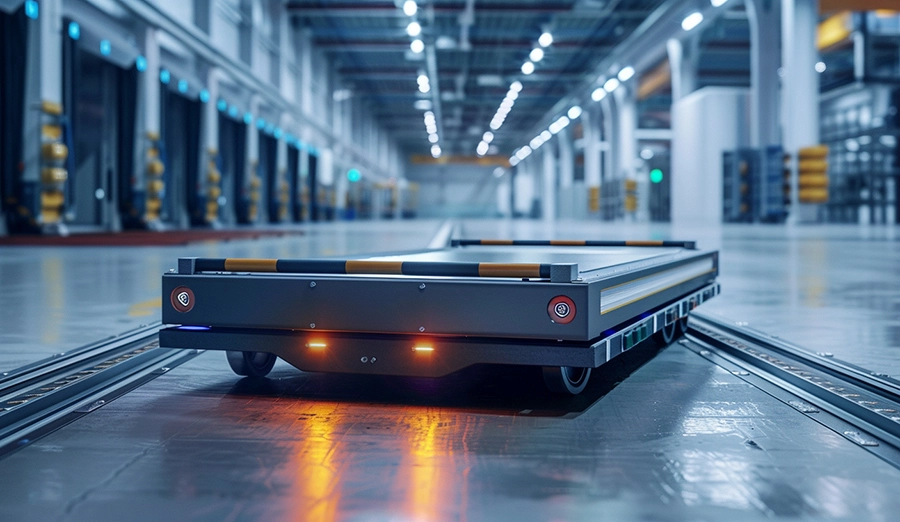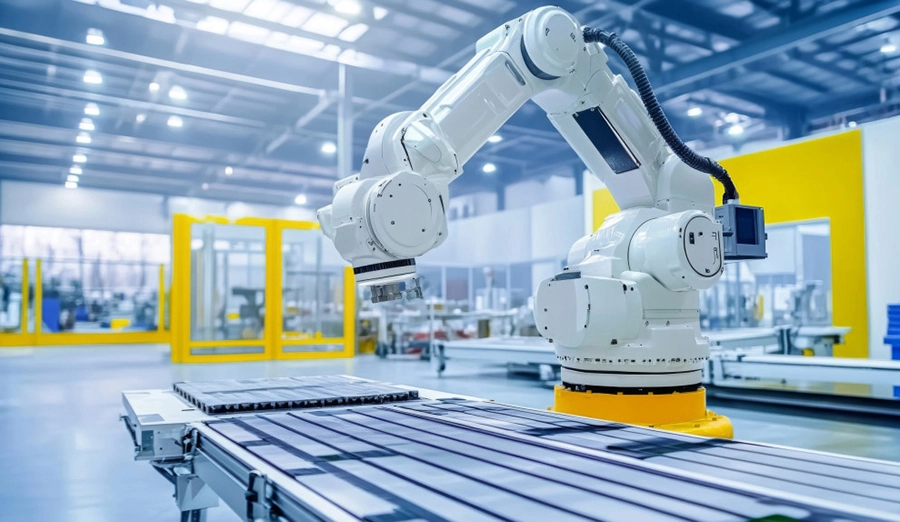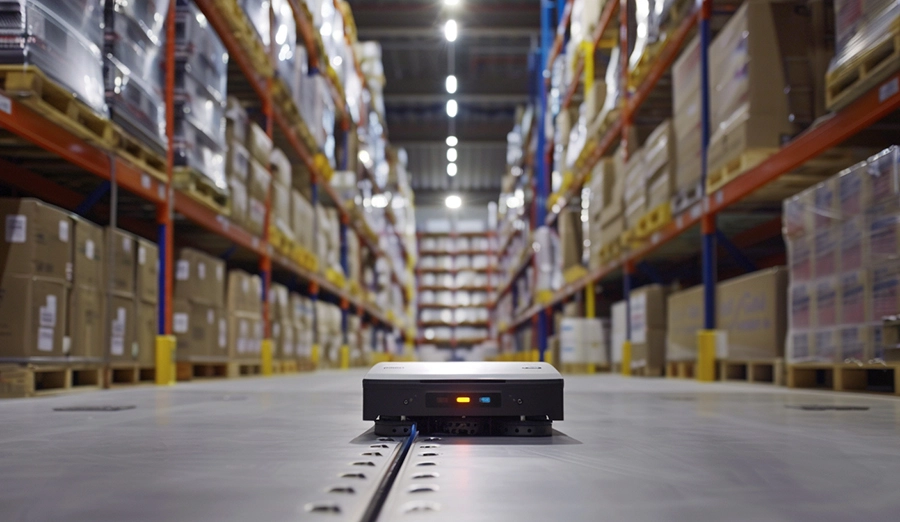
WIRELESS CHARGING IN THE NEWS
With the rapid development of photovoltaic power generation technology today, the scale of photovoltaic power stations is increasing day by day, and the ensuing cleaning and maintenance needs are becoming more and more important. Photovoltaic cleaning robot with its high efficiency, energy saving, environmental protection characteristics, gradually become the main force of photovoltaic power plant maintenance. However, the charging method chosen by photovoltaic cleaning robots directly affects the work efficiency and operating costs of these robots. This paper will deeply explore the wired charging, wireless charging, solar charging and hybrid charging four main ways, reveal their advantages and disadvantages and look forward to the future trend.
Wired charging: Traditional stability guarantee
Wired charging is the earliest charging method used by photovoltaic cleaning robots, which is charged by connecting the charging line to the power supply. This method provides stability because it is directly connected to the grid, providing stable power and avoiding robot downtime due to insufficient power. In addition, the charging speed of wired charging is faster because the high current charging efficiency is higher. Technically, wired charging equipment is low-cost and easy to maintain because of its mature technology.
However, the disadvantages of wired charging cannot be ignored. First of all, the flexibility is poor, the range of activity is limited by the length of the charging line, and it is difficult to cover a large area of photovoltaic power stations. Secondly, there are security risks, the cable is easy to damage, there is a risk of electrical failure. Finally, the installation is complicated, the wiring is troublesome, the installation needs professional personnel, and the initial investment is high.
Wireless charging: the future of flexibility
Wireless charging realizes non-contact charging between the robot and the charging base station through electromagnetic induction or magnetic resonance technology. This method has high flexibility and is not limited by charging lines, which is especially suitable for large-area photovoltaic power plants. With a high degree of automation, the robot can independently find the charging base station, improve work efficiency and reduce manual intervention. In addition, wireless charging reduces the risk of electrical failure and electric shock due to the non-contact method, high safety and no cable connection.
But wireless charging also faces challenges. Charging efficiency needs to be further improved to improve energy transmission efficiency. Distance limitation is also a problem, the effective transmission distance has a certain limit, which affects the continuous work of the robot.
Solar charging: the combination of environmental protection and autonomy
Solar charging uses photovoltaic panels to convert solar energy into electricity to power the robot. This way environmental protection and energy saving, the use of renewable energy, reduce traditional power dependence, in line with the green development trend. The robot can charge autonomously according to the lighting conditions to improve the battery life. In addition, after the one-time installation of solar charging, the operating cost is low, and the long-term economic benefits are significant.
However, there are limitations to solar charging. Charging efficiency is greatly affected by weather and lighting conditions, rainy days or insufficient light, charging effect is not ideal. Solar panels have limited power density and slow charging speed, making it difficult to meet high power needs. In terms of technology, energy conversion efficiency and energy storage capacity need further breakthroughs.
Hybrid charging: The smart choice of multiple guarantees
Hybrid charging combines wired, wireless and solar charging methods, comprehensively utilizing their respective advantages to provide stable and continuous power support for photovoltaic cleaning robots. This way is flexible, and through the combination of multiple charging methods, the robot can choose the best solution according to the situation. High reliability, ensure smooth charging in different environments, reduce the limitation of a single charging mode. Wide adaptability, suitable for photovoltaic power plants of various sizes and environments.
Of course, hybrid charging has its drawbacks. The cost is higher, and a variety of equipment and technical support require more investment. The technology is complex, and the system integration and control are difficult, requiring a high level of technology and maintenance ability.
Parity Time wireless charging innovation: the perfect combination of efficiency and convenience
As a leading company in wireless charging technology research and development, our solutions continue to innovate in terms of improving charging efficiency and reducing costs. Through magnetic resonance technology, our wireless charging system can efficiently transmit power over a large distance, solving the distance and efficiency problems of traditional wireless charging. In addition, our intelligent management system monitors the charging status in real time and automatically optimizes the charging process to ensure that the robot is always in the best working condition.
Shandong Parity Time is a manufacturer of full-power wireless charging technology, and is also the earliest company to do wireless charging products in China. For the characteristics of wireless charging for photovoltaic cleaning robots, which is both just needed and demanding in cost, the company launched a special wireless charging for photovoltaic cleaning robots, which is very cost-effective and has been adopted by many manufacturers.
We firmly believe that wireless charging will become the mainstream choice for charging photovoltaic clean robots in the future. Through continuous technological innovation and optimization, we are committed to providing more efficient, safe and convenient charging solutions for photovoltaic power stations and promoting the green development of the photovoltaic industry.
Future outlook: the dual drive of technological progress and application demand
The charging method of photovoltaic cleaning robots directly affects their work efficiency and operating costs. Each charging mode has its own advantages and disadvantages. You need to select the charging mode based on the specific application scenario and requirements. Wired charging is suitable for small area fixed layout power stations, wireless charging is suitable for large area complex layout power stations, solar charging is in line with the green development trend, hybrid charging provides higher flexibility and reliability. With the continuous progress of technology and changes in application needs, the charging method of photovoltaic cleaning robots will also be continuously optimized and upgraded to better meet market demand and help the photovoltaic industry to a brighter future.







